
|
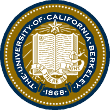 Jonathan Shewchuk
Jonathan Shewchuk
Professor in
Computer Science
University of California at Berkeley

Office
529 Soda Hall
Computer Science Division
University of California at Berkeley
Berkeley, California 94720-1776
(510) 642-3936 [(510) NICE ZEN]
Office hours (510 or 529 Soda Hall)
Mondays, 5:10-6:00 pm
Fridays, 5:10-6:00 pm
and by appointment.
|
Outside of office hours or lectures,
your best shot at contacting me is to try my office
between 3 pm and midnight on Monday, Wednesday, or Friday,
in person or by phone.
Those are the ideal times to ask me about
research, coursework, or anything else.
Sadly, Soda Hall and its fifth floor are locked after 6:30,
so call my office if you want to visit and don't have a keycard.
While you're by, ask me to make a pot of tea.
I get teas from Upton Tea Imports,
a first-rate importer in Massachusetts,
and I enjoy introducing people to the good stuff.
Mornings I sleep. Attempts to phone me then are futile.
|
Notice:
I do not wish to be a public figure.
I have not responded to requests for media contact, nor
will I respond to any in the future.
In libel cases, plaintiffs who are public figures have to meet
a more stringent standard than do private citizens.
According to the Digital Media Law Project, in California,
“A limited-purpose public figure is a person who voluntarily injects
herself or is drawn into a particular public controversy.
It is not necessary to show that she actually achieves prominence in
public debate; her attempts to thrust herself in front of the public is
sufficient.”
I hereby declare that I do not wish to be
a limited-purpose public figure, I am acting to avoid that fate, and
I do not intend and have never intended to be part of a public debate.
I just want to quietly do beautiful mathematics.
I DO RESEARCH
in scientific computing, computational geometry
(especially mesh generation, numerical robustness, and surface reconstruction),
numerical methods, and physically-based animation.
If you came here with a specific object in mind, you're probably looking for my
triangular mesh generator
Triangle,
my paper
An Introduction to the Conjugate Gradient Method Without the Agonizing
Pain,
or my paper
What Is a Good Linear Finite Element?
Interpolation, Conditioning, Anisotropy, and Quality Measures.
If you are considering applying for
graduate school or a postdoctoral position
in the Computer Science Division, please read this note.
Product
 TRIANGLE.
A production-quality C program for
two-dimensional constrained Delaunay triangulation and quality mesh generation.
See the
Triangle page
to obtain the source code and for hypertext instructions.
I expect to release its three-dimensional successor, Star,
in the near future.
The algorithms behind Triangle and Star are discussed in my dissertation
and in several other papers on my
Papers
page.
TRIANGLE.
A production-quality C program for
two-dimensional constrained Delaunay triangulation and quality mesh generation.
See the
Triangle page
to obtain the source code and for hypertext instructions.
I expect to release its three-dimensional successor, Star,
in the near future.
The algorithms behind Triangle and Star are discussed in my dissertation
and in several other papers on my
Papers
page.
 STELLAR.
A C program for aggressively improving the quality of tetrahedral meshes,
making them suitable for finite element analysis.
Stellar routinely improves meshes so that the smallest dihedral angle is larger
than 30 degrees and the largest dihedral angle is smaller than 140 degrees.
See the
Stellar page
to obtain the source code, hypertext instructions, and
publications describing its algorithms.
STELLAR.
A C program for aggressively improving the quality of tetrahedral meshes,
making them suitable for finite element analysis.
Stellar routinely improves meshes so that the smallest dihedral angle is larger
than 30 degrees and the largest dihedral angle is smaller than 140 degrees.
See the
Stellar page
to obtain the source code, hypertext instructions, and
publications describing its algorithms.
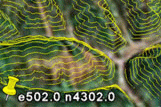 STREAMING GEOMETRIC
SOFTWARE.
Software tools for processing huge meshes and point sets,
including Delaunay triangulation construction in two or three dimensions
and computations for GIS (Geographic Information Systems).
Need to triangulate billions of points, or use them
to construct elevation maps and isocontours, on an ordinary computer?
Martin Isenburg, I, and our collaborators have streaming tools for
constructing huge Delaunay triangulations,
constructing Digital Elevation Maps and isolines,
processing LIDAR data in LAS format, and
visualizing LIDAR data in Google Earth.
Our algorithms for processing gobs of data are discussed in several papers on
my Papers
page.
STREAMING GEOMETRIC
SOFTWARE.
Software tools for processing huge meshes and point sets,
including Delaunay triangulation construction in two or three dimensions
and computations for GIS (Geographic Information Systems).
Need to triangulate billions of points, or use them
to construct elevation maps and isocontours, on an ordinary computer?
Martin Isenburg, I, and our collaborators have streaming tools for
constructing huge Delaunay triangulations,
constructing Digital Elevation Maps and isolines,
processing LIDAR data in LAS format, and
visualizing LIDAR data in Google Earth.
Our algorithms for processing gobs of data are discussed in several papers on
my Papers
page.
 EXACT ARITHMETIC AND ROBUST
GEOMETRIC PREDICATES.
I've written a set of fast routines for exact floating-point
addition and multiplication, which I've used to create
fast correct geometric predicates, namely the two- and three-dimensional
orientation and incircle tests.
These predicates are used to make the Delaunay triangulation routines
in Triangle and Star robust against roundoff error.
See my
Robust Predicates page for more information, for papers,
or to obtain the C source code.
EXACT ARITHMETIC AND ROBUST
GEOMETRIC PREDICATES.
I've written a set of fast routines for exact floating-point
addition and multiplication, which I've used to create
fast correct geometric predicates, namely the two- and three-dimensional
orientation and incircle tests.
These predicates are used to make the Delaunay triangulation routines
in Triangle and Star robust against roundoff error.
See my
Robust Predicates page for more information, for papers,
or to obtain the C source code.
Proselytization
 PAPERS.
All my publications are available here.
PAPERS.
All my publications are available here.
 The conjugate gradient method
The conjugate gradient method
 Mesh generation
Mesh generation
 Physically-based computer animation
Physically-based computer animation
 Streaming geometry
Streaming geometry
 Numerical analysis of finite element quality
Numerical analysis of finite element quality
 Numerically robust geometry
Numerically robust geometry
 Constrained Delaunay triangulations
Constrained Delaunay triangulations
 Surface reconstruction
Surface reconstruction
 Large-scale earthquake simulation
Large-scale earthquake simulation
 Parallel finite element methods
Parallel finite element methods
 Communication requirements of unstructured simulations
Communication requirements of unstructured simulations
 Route planning on real-world maps
Route planning on real-world maps
 RESEARCH OVERVIEW.
Here's a self-contained summary of some of my research.
This is the fastest way to learn a bit about my work.
RESEARCH OVERVIEW.
Here's a self-contained summary of some of my research.
This is the fastest way to learn a bit about my work.
 THREE SINS OF AUTHORS IN
COMPUTER SCIENCE AND MATH.
A short crotchety essay that will improve your technical writing,
or annoy you trying.
You won't find these sins decried in the usual books of writing advice.
THREE SINS OF AUTHORS IN
COMPUTER SCIENCE AND MATH.
A short crotchety essay that will improve your technical writing,
or annoy you trying.
You won't find these sins decried in the usual books of writing advice.
While you're at it, you might be interested in my (less snarky) advice on
Giving an Academic
Talk.
Projects
 BERKELEY COMPUTER ANIMATION
& MODELING GROUP.
We develop numerical and geometric methods for physically-based animation,
especially for objects and materials with dynamically changing geometry.
Dynamic geometry is important for modeling fluids, viscoplastic materials,
and events such as surgery, car crashes, and explosions.
BERKELEY COMPUTER ANIMATION
& MODELING GROUP.
We develop numerical and geometric methods for physically-based animation,
especially for objects and materials with dynamically changing geometry.
Dynamic geometry is important for modeling fluids, viscoplastic materials,
and events such as surgery, car crashes, and explosions.
 QUAKE.
The Quake Project is a multidisciplinary Grand Challenge Application
Group studying ground motion in large basins during strong earthquakes,
with the goal of characterizing the seismic response of the Los Angeles basin.
We created some of the largest unstructured finite element
simulations ever performed.
QUAKE.
The Quake Project is a multidisciplinary Grand Challenge Application
Group studying ground motion in large basins during strong earthquakes,
with the goal of characterizing the seismic response of the Los Angeles basin.
We created some of the largest unstructured finite element
simulations ever performed.
Professing
 CS 294: MESH GENERATION AND
GEOMETRY PROCESSING IN
GRAPHICS, ENGINEERING,
AND MODELING
(Spring 2012,
Spring 2008,
Autumn 1999).
Techniques for generating and processing meshes for
finite element methods, graphics, interpolation,
Geographical Information Systems, and other applications.
Algorithms for computing optimal triangulations.
CS 294: MESH GENERATION AND
GEOMETRY PROCESSING IN
GRAPHICS, ENGINEERING,
AND MODELING
(Spring 2012,
Spring 2008,
Autumn 1999).
Techniques for generating and processing meshes for
finite element methods, graphics, interpolation,
Geographical Information Systems, and other applications.
Algorithms for computing optimal triangulations.
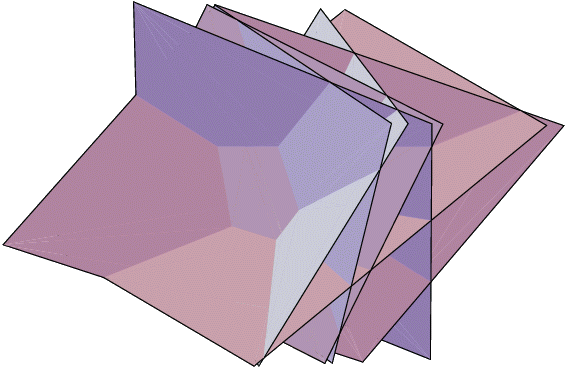 CS 274: COMPUTATIONAL GEOMETRY
(Spring 2019,
Spring 2017,
Spring 2015,
Spring 2013,
Autumn 2009,
Autumn 2006,
Spring 2005,
Spring 2003).
Geometric algorithms, analyses, and applications.
Polygons, polytopes, triangulations, planar and spatial subdivisions,
convex hulls, halfspace intersections, Voronoi diagrams,
Delaunay triangulations, arrangements of lines and hyperplanes.
Geometric queries (databases, point location), binary space partitions,
robot motion planning, cartography, solid modeling,
small-dimensional linear programming, and more.
CS 274: COMPUTATIONAL GEOMETRY
(Spring 2019,
Spring 2017,
Spring 2015,
Spring 2013,
Autumn 2009,
Autumn 2006,
Spring 2005,
Spring 2003).
Geometric algorithms, analyses, and applications.
Polygons, polytopes, triangulations, planar and spatial subdivisions,
convex hulls, halfspace intersections, Voronoi diagrams,
Delaunay triangulations, arrangements of lines and hyperplanes.
Geometric queries (databases, point location), binary space partitions,
robot motion planning, cartography, solid modeling,
small-dimensional linear programming, and more.
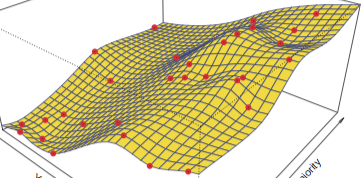 CS 189 / CS 289A: INTRODUCTION TO MACHINE
LEARNING
(Spring 2024,
Spring 2023,
Spring 2022,
Spring 2021,
Spring 2020,
Spring 2019,
Spring 2017,
Spring 2016).
The study of how computers can “learn”
by finding patterns in data and using them to make predictions.
Covers supervised learning methods such as classification and regression, and
unsupervised learning methods such as clustering, dimensionality reduction, and
density estimation.
CS 189 / CS 289A: INTRODUCTION TO MACHINE
LEARNING
(Spring 2024,
Spring 2023,
Spring 2022,
Spring 2021,
Spring 2020,
Spring 2019,
Spring 2017,
Spring 2016).
The study of how computers can “learn”
by finding patterns in data and using them to make predictions.
Covers supervised learning methods such as classification and regression, and
unsupervised learning methods such as clustering, dimensionality reduction, and
density estimation.
 CS 170: EFFICIENT ALGORITHMS AND
INTRACTABLE PROBLEMS (Spring 2001).
The study of advanced algorithms, including graph algorithms,
dynamic programming, linear programming, matrix multiplication,
and number theory, plus an introduction to the theory of
NP-completeness.
CS 170: EFFICIENT ALGORITHMS AND
INTRACTABLE PROBLEMS (Spring 2001).
The study of advanced algorithms, including graph algorithms,
dynamic programming, linear programming, matrix multiplication,
and number theory, plus an introduction to the theory of
NP-completeness.
 CS 61B: DATA STRUCTURES
(Spring 2014,
Spring 2013,
Spring 2012,
Autumn 2010,
Spring 2009,
Autumn 2006,
Spring 2005,
Spring 2004,
Spring 2002,
Spring 2000,
Autumn 1998).
An introduction to data structures (lists, trees, hash tables, graphs, etc.),
simple algorithms (searching and sorting), encapsulation,
and the language Java.
CS 61B: DATA STRUCTURES
(Spring 2014,
Spring 2013,
Spring 2012,
Autumn 2010,
Spring 2009,
Autumn 2006,
Spring 2005,
Spring 2004,
Spring 2002,
Spring 2000,
Autumn 1998).
An introduction to data structures (lists, trees, hash tables, graphs, etc.),
simple algorithms (searching and sorting), encapsulation,
and the language Java.
 CS 4 aka CS 39L: INTRODUCTION TO COMPUTING FOR
ENGINEERS (Spring 2006).
An introductory computer programming class that employs
examples from engineering and science.
An alternative to CS 3, taught in the language Java.
CS 4 aka CS 39L: INTRODUCTION TO COMPUTING FOR
ENGINEERS (Spring 2006).
An introductory computer programming class that employs
examples from engineering and science.
An alternative to CS 3, taught in the language Java.
Protégés
MARTIN ISENBURG, 1972–2021,
In Memoriam.
Martin was a Post-Doctoral Scholar under my supervision
from the summer of 2005 to the summer of 2007.
He developed a software suite called
the LAStools
for fast streaming computation of geographical information (including
Delaunay triangulations) on huge data sets,
which he subsequently promoted through his personal company,
rapidlasso GmbH.
I wrote an extended obituary for him after
his sad early death.
MARC KHOURY
in May 2020 completed his Ph.D. on
restricted
constrained Delaunay triangulations and
the geometry of adversarial examples.
Read his dissertation,
Geometric
Sampling Theory, Triangulations, and Robust Machine Learning.
He now works at Hudson River Trading.

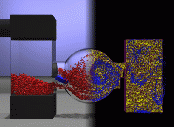 BRYAN KLINGNER
in November 2008 completed his Ph.D. on
tetrahedral
mesh improvement algorithms and
physical simulations with dynamically changing geometry.
Read his dissertation,
Improving
Tetrahedral Meshes.
He now works at Google.
BRYAN KLINGNER
in November 2008 completed his Ph.D. on
tetrahedral
mesh improvement algorithms and
physical simulations with dynamically changing geometry.
Read his dissertation,
Improving
Tetrahedral Meshes.
He now works at Google.
RAVIKRISHNA KOLLURI
in December 2005 completed his Ph.D. on surface reconstruction algorithms,
including
spectral
surface reconstruction, scan registration,
moving least squares interpolation for generating implicit surfaces
(which won the Best Student Paper Award
at the 2005 Symposium on Discrete Algorithms),
and the very cool
power
crust.
Read his dissertation,
From
Range Images to 3D Models.
He now works at Google.
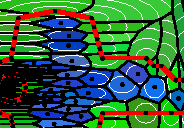 FRANÇOIS LABELLE
in August 2007 completed his Ph.D. on
tetrahedral mesh generation algorithms with
guaranteed dihedral angles (notably
isosurface
stuffing).
Read his dissertation,
Tetrahedral
Mesh Generation with Good Dihedral Angles Using Point Lattices.
During his time at Berkeley,
he also did lovely work in
anisotropic
mesh generation.
FRANÇOIS LABELLE
in August 2007 completed his Ph.D. on
tetrahedral mesh generation algorithms with
guaranteed dihedral angles (notably
isosurface
stuffing).
Read his dissertation,
Tetrahedral
Mesh Generation with Good Dihedral Angles Using Point Lattices.
During his time at Berkeley,
he also did lovely work in
anisotropic
mesh generation.
JESSICA SCHOEN
in May 2008 completed her M.S. on
robust anisotropic mesh generation in the plane.
Read her thesis,
Robust,
Guaranteed-Quality Anisotropic Mesh Generation.
Promotion

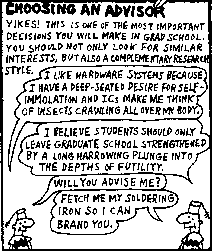 CARNEGIE MELLON UNIVERSITY'S
SCHOOL OF COMPUTER SCIENCE IS
HELL.
My t-shirt design for the 1992 Immigration Course, a three-week departmental
orientation for new doctoral students.
If you want to print it, I recommend downloading the
full-size version (3888 x 6456, 784k GIF).
It's a 600 dpi scan of a sheet of legal-size paper.
CARNEGIE MELLON UNIVERSITY'S
SCHOOL OF COMPUTER SCIENCE IS
HELL.
My t-shirt design for the 1992 Immigration Course, a three-week departmental
orientation for new doctoral students.
If you want to print it, I recommend downloading the
full-size version (3888 x 6456, 784k GIF).
It's a 600 dpi scan of a sheet of legal-size paper.
CALVIN AND HOBBES AND
CARNEGIE MELLON UNIVERSITY'S
SCHOOL OF COMPUTER SCIENCE.
My t-shirt design for the 1994 Immigration Course.
For printing, here's the
full-size version (3553 x 5861, 621k GIF),
which is also a 600 dpi scan of a sheet of legal-size paper.
Profile


 I WAS BORN in
Cranbrook, British Columbia, Canada.
I am a Canadian citizen and a U.S. permanent resident.
I obtained my B.Sc. in
Physics and
Computing Science from
Simon Fraser University in 1990,
and my M.S. and Ph.D. in
Computer Science from
Carnegie Mellon University,
the latter in 1997.
I am trained to only sleep during
national holidays.
I joined the
Computer Science Division of the
Department of Electrical Engineering and Computer Sciences at
Berkeley in 1998.
I am also an Adjunct Semi-Senior Pseudoscientist with
Enhanced Library Privileges in the School of Information Repetition at
Stanford–Berkeley Professors' Spouses'
University.
My favorite piano concertos are
Brahms' Second,
Medtner's Third,
and Scharwenka's
Fourth.
Only I am allowed to talk about Fight Club.
I WAS BORN in
Cranbrook, British Columbia, Canada.
I am a Canadian citizen and a U.S. permanent resident.
I obtained my B.Sc. in
Physics and
Computing Science from
Simon Fraser University in 1990,
and my M.S. and Ph.D. in
Computer Science from
Carnegie Mellon University,
the latter in 1997.
I am trained to only sleep during
national holidays.
I joined the
Computer Science Division of the
Department of Electrical Engineering and Computer Sciences at
Berkeley in 1998.
I am also an Adjunct Semi-Senior Pseudoscientist with
Enhanced Library Privileges in the School of Information Repetition at
Stanford–Berkeley Professors' Spouses'
University.
My favorite piano concertos are
Brahms' Second,
Medtner's Third,
and Scharwenka's
Fourth.
Only I am allowed to talk about Fight Club.
Editorial
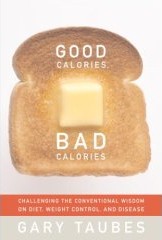 FOR OVER 30 YEARS,
researchers and government agencies have put forth nutritional edicts
that are unsupported, and often contradicted, by their own data:
“saturated fat
(or all fat) is bad for you”;
“polyunsaturated vegetable oils are good for you”;
“grains
are healthy”;
“whole
grains are healthier”;
“fiber is important
for good health”;
“carbohydrates are
essential”;
“high
LDL cholesterol (or total cholesterol) causes heart disease”;
“fat
is fattening”;
“obesity can be combatted by
eating less and
exercising more.”
The public and press are unaware how much scientific evidence
nutritional authorities have had to ignore to perpetuate these
notions, which survive on account of ambition, politics, and fear of scientific
ostracism, rather than good science.
FOR OVER 30 YEARS,
researchers and government agencies have put forth nutritional edicts
that are unsupported, and often contradicted, by their own data:
“saturated fat
(or all fat) is bad for you”;
“polyunsaturated vegetable oils are good for you”;
“grains
are healthy”;
“whole
grains are healthier”;
“fiber is important
for good health”;
“carbohydrates are
essential”;
“high
LDL cholesterol (or total cholesterol) causes heart disease”;
“fat
is fattening”;
“obesity can be combatted by
eating less and
exercising more.”
The public and press are unaware how much scientific evidence
nutritional authorities have had to ignore to perpetuate these
notions, which survive on account of ambition, politics, and fear of scientific
ostracism, rather than good science.
Meanwhile, a new picture is emerging in which the
“diseases of civilization&rdquo—heart disease, diabetes,
overweight,
tooth
decay,
and perhaps even Alzheimer's disease and many cancers—are symptoms
of a metabolic dysfunction caused by both the wrong foods and deficiencies
of the right ones.
The most likely culprits appear to be metabolism-disrupting
lectins in
grains
(especially wheat, other
gluten
grains, and soy);
fructose
(often in the form of high fructose corn syrup, from grain);
omega-6
fats and
lectins
in vegetable seed oils (also from grain);
iron;
and deficiencies of
Vitamin D3,
Vitamin K2 MK-4,
copper,
omega-3
fats,
magnesium,
and
niacin.
It is not yet clear whether carbohydrates in large amounts are inherently
harmful, though they are clearly harmful to many people who have broken their
metabolisms with grain products.
(If there is a safe carbohydrate source, it is probably root vegetables.)
Consumption of grains, vegetable seed oils, fructose, and carbohydrates
has risen sharply, and intake of Vitamin K2 MK-4 has dropped,
in response to official demonization of dietary saturated fat,
causing increases of type 2 diabetes and obesity.
The American Medical Association, the
American
Heart Association, the
American Diabetes
Association,
and many other authorities have blood on their hands, and
they will continue to lead us lambs into the slaughterhouse of grain
poisoning until the culture of nutritional research is reformed.
While I've been aware of these facts for some time, I now have a rigorous
account to direct people to. Gary Taubes, in
Good
Calories, Bad Calories—his new
exposé of what the scientific data really reveal—writes,
“The institutionalized vigilance,
‘this unending exchange of critical judgment,’
is nowhere to be found in the study of nutrition, chronic disease,
and obesity, and it hasn't been for decades. For this reason, it is difficult
to use the term ‘scientist’ to describe those individuals who
work in these disciplines. …
The result is an enormous enterprise dedicated in
theory to determining the relationship between diet, obesity, and disease,
while dedicated in practice to convincing everyone involved, and the lay
public, most of all, that the answers are already known and always have
been—an enterprise, in other words, that purports to be a science and yet
functions like a religion.” Harsh words, but words entirely justified by
the data in the research literature—though the papers that present those
data often go through great contortions to
explain them away and
defend the dogma.
I call upon the National Institutes of Health (NIH) to fund large randomized
controlled trials that test the hypothesis that grain-derived carbohydrates
are central in the etiology of coronary heart disease, diabetes, and obesity.
Over the past two decades, the NIH has dedicated its largest nutritional grants
to unsuccessfully confirming the “fat is bad” hypothesis, while
neglecting all competing hypotheses. We are all suffering for this
misallocation of resources.
“[Wisdom] is earned through disgrace, through painful realization of
the inadequacy of your personal world view.”
—
Nat Hillard
“In my psychedelic, hazy-vision state, where I reach the ultimate
heightened awareness of the beer-buzz, I realise the true meaning of exams:
that professors are evil, torture-loving beings, and that we cannot blame them
for their shortcomings.”
—
Rob Chung
“We need a more lasting form of negative feedback than just
paper rejections.”
— Jonathan Hardwick
on research
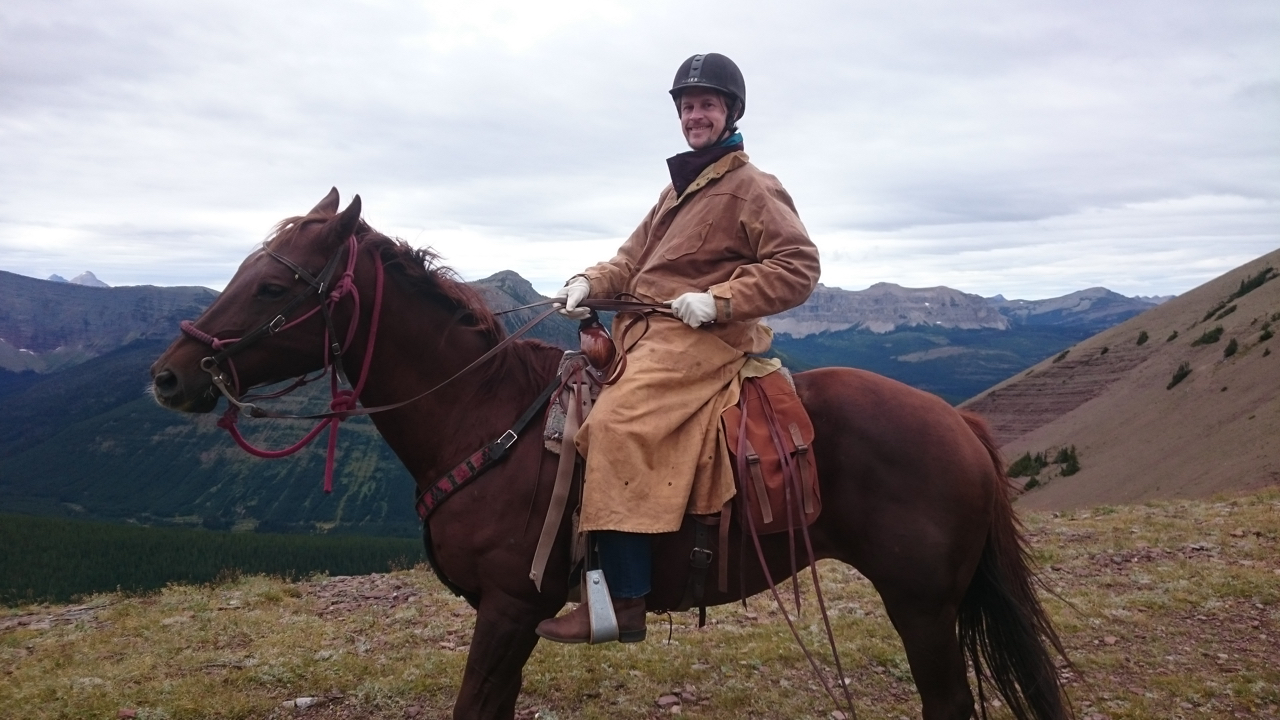

 Jonathan Shewchuk
Jonathan Shewchuk![]()
 TRIANGLE.
A production-quality C program for
two-dimensional constrained Delaunay triangulation and quality mesh generation.
See the
Triangle page
to obtain the source code and for hypertext instructions.
I expect to release its three-dimensional successor, Star,
in the near future.
The algorithms behind Triangle and Star are discussed in my dissertation
and in several other papers on my
Papers
page.
TRIANGLE.
A production-quality C program for
two-dimensional constrained Delaunay triangulation and quality mesh generation.
See the
Triangle page
to obtain the source code and for hypertext instructions.
I expect to release its three-dimensional successor, Star,
in the near future.
The algorithms behind Triangle and Star are discussed in my dissertation
and in several other papers on my
Papers
page.



 PAPERS.
All my publications are available here.
PAPERS.
All my publications are available here.


 BERKELEY COMPUTER ANIMATION
& MODELING GROUP.
We develop numerical and geometric methods for physically-based animation,
especially for objects and materials with dynamically changing geometry.
Dynamic geometry is important for modeling fluids, viscoplastic materials,
and events such as surgery, car crashes, and explosions.
BERKELEY COMPUTER ANIMATION
& MODELING GROUP.
We develop numerical and geometric methods for physically-based animation,
especially for objects and materials with dynamically changing geometry.
Dynamic geometry is important for modeling fluids, viscoplastic materials,
and events such as surgery, car crashes, and explosions.

 CS 294: MESH GENERATION AND
GEOMETRY PROCESSING IN
GRAPHICS, ENGINEERING,
AND MODELING
(Spring 2012,
Spring 2008,
Autumn 1999).
Techniques for generating and processing meshes for
finite element methods, graphics, interpolation,
Geographical Information Systems, and other applications.
Algorithms for computing optimal triangulations.
CS 294: MESH GENERATION AND
GEOMETRY PROCESSING IN
GRAPHICS, ENGINEERING,
AND MODELING
(Spring 2012,
Spring 2008,
Autumn 1999).
Techniques for generating and processing meshes for
finite element methods, graphics, interpolation,
Geographical Information Systems, and other applications.
Algorithms for computing optimal triangulations.









 CARNEGIE MELLON UNIVERSITY'S
SCHOOL OF COMPUTER SCIENCE IS
HELL.
My t-shirt design for the 1992 Immigration Course, a three-week departmental
orientation for new doctoral students.
If you want to print it, I recommend downloading the
full-size version (3888 x 6456, 784k GIF).
It's a 600 dpi scan of a sheet of legal-size paper.
CARNEGIE MELLON UNIVERSITY'S
SCHOOL OF COMPUTER SCIENCE IS
HELL.
My t-shirt design for the 1992 Immigration Course, a three-week departmental
orientation for new doctoral students.
If you want to print it, I recommend downloading the
full-size version (3888 x 6456, 784k GIF).
It's a 600 dpi scan of a sheet of legal-size paper.

 I WAS BORN in
Cranbrook, British Columbia, Canada.
I am a Canadian citizen and a U.S. permanent resident.
I obtained my B.Sc. in
Physics and
Computing Science from
Simon Fraser University in 1990,
and my M.S. and Ph.D. in
Computer Science from
Carnegie Mellon University,
the latter in 1997.
I am trained to only sleep during
national holidays.
I joined the
Computer Science Division of the
Department of Electrical Engineering and Computer Sciences at
Berkeley in 1998.
I am also an Adjunct Semi-Senior Pseudoscientist with
Enhanced Library Privileges in the School of Information Repetition at
Stanford–Berkeley Professors' Spouses'
University.
My favorite piano concertos are
Brahms' Second,
Medtner's Third,
and Scharwenka's
Fourth.
Only I am allowed to talk about Fight Club.
I WAS BORN in
Cranbrook, British Columbia, Canada.
I am a Canadian citizen and a U.S. permanent resident.
I obtained my B.Sc. in
Physics and
Computing Science from
Simon Fraser University in 1990,
and my M.S. and Ph.D. in
Computer Science from
Carnegie Mellon University,
the latter in 1997.
I am trained to only sleep during
national holidays.
I joined the
Computer Science Division of the
Department of Electrical Engineering and Computer Sciences at
Berkeley in 1998.
I am also an Adjunct Semi-Senior Pseudoscientist with
Enhanced Library Privileges in the School of Information Repetition at
Stanford–Berkeley Professors' Spouses'
University.
My favorite piano concertos are
Brahms' Second,
Medtner's Third,
and Scharwenka's
Fourth.
Only I am allowed to talk about Fight Club.
 FOR OVER 30 YEARS,
researchers and government agencies have put forth nutritional edicts
that are unsupported, and often contradicted, by their own data:
“saturated fat
(or all fat) is bad for you”;
“polyunsaturated vegetable oils are good for you”;
“grains
are healthy”;
“whole
grains are healthier”;
“fiber is important
for good health”;
“carbohydrates are
essential”;
“high
LDL cholesterol (or total cholesterol) causes heart disease”;
“fat
is fattening”;
“obesity can be combatted by
eating less and
exercising more.”
The public and press are unaware how much scientific evidence
nutritional authorities have had to ignore to perpetuate these
notions, which survive on account of ambition, politics, and fear of scientific
ostracism, rather than good science.
FOR OVER 30 YEARS,
researchers and government agencies have put forth nutritional edicts
that are unsupported, and often contradicted, by their own data:
“saturated fat
(or all fat) is bad for you”;
“polyunsaturated vegetable oils are good for you”;
“grains
are healthy”;
“whole
grains are healthier”;
“fiber is important
for good health”;
“carbohydrates are
essential”;
“high
LDL cholesterol (or total cholesterol) causes heart disease”;
“fat
is fattening”;
“obesity can be combatted by
eating less and
exercising more.”
The public and press are unaware how much scientific evidence
nutritional authorities have had to ignore to perpetuate these
notions, which survive on account of ambition, politics, and fear of scientific
ostracism, rather than good science.
